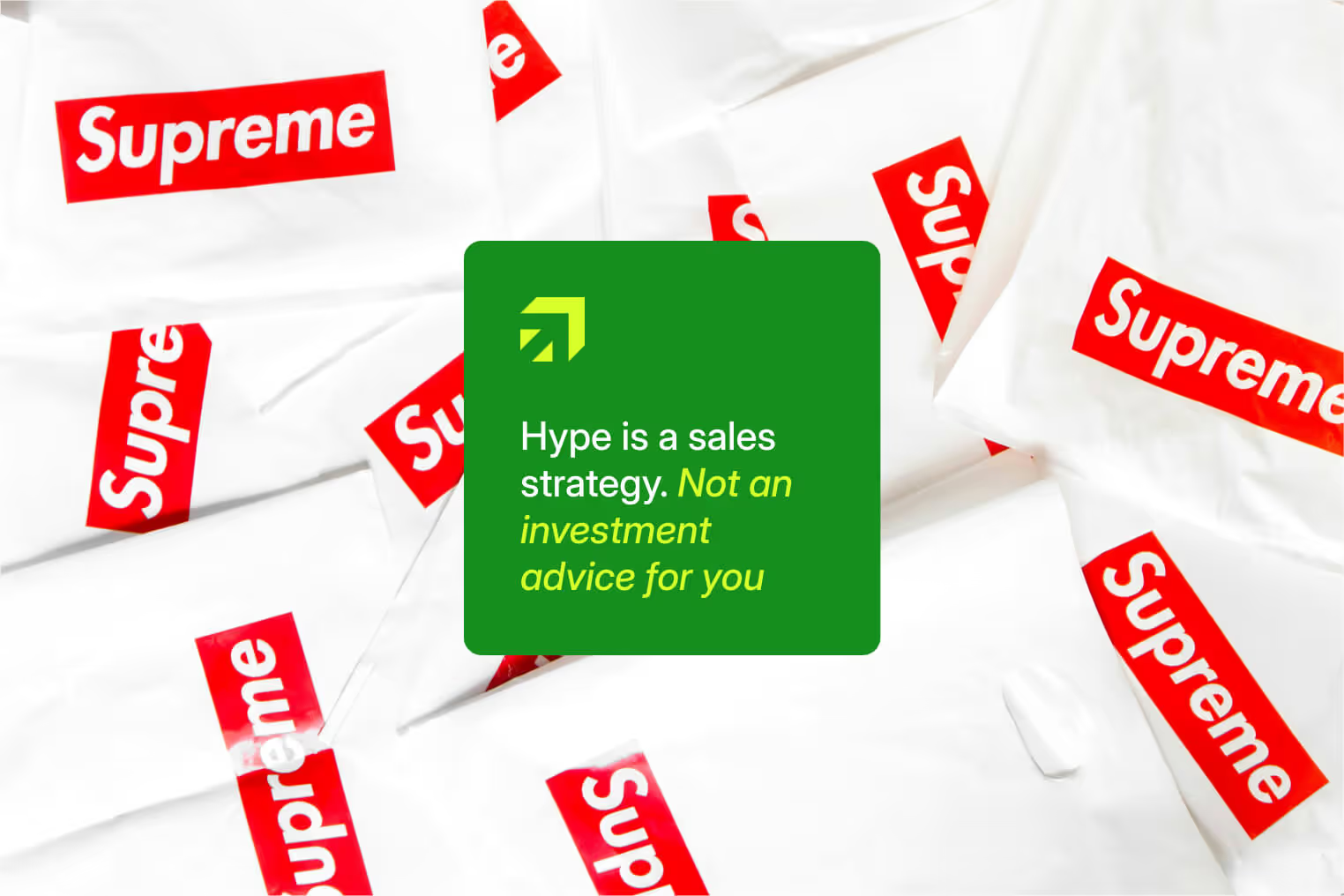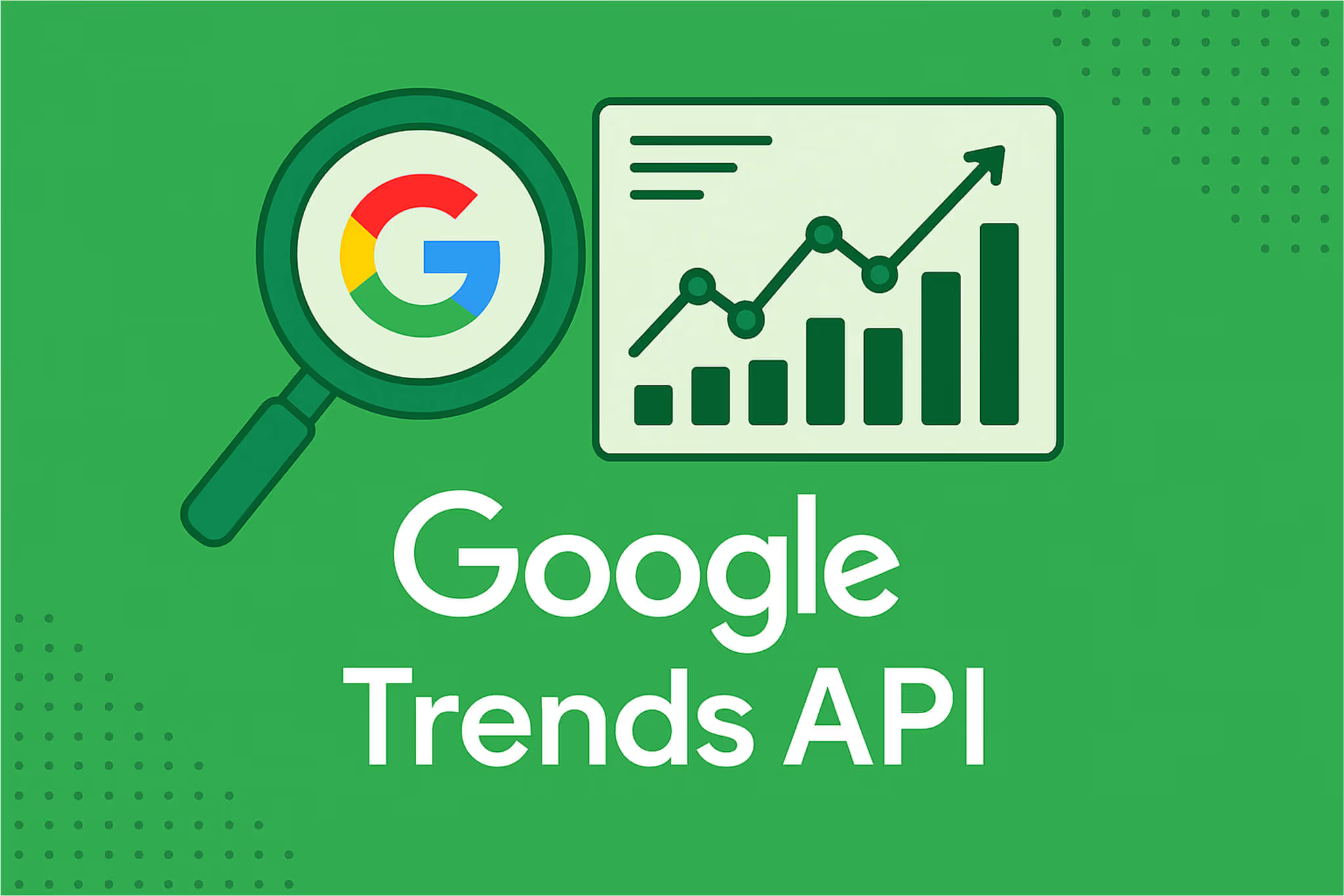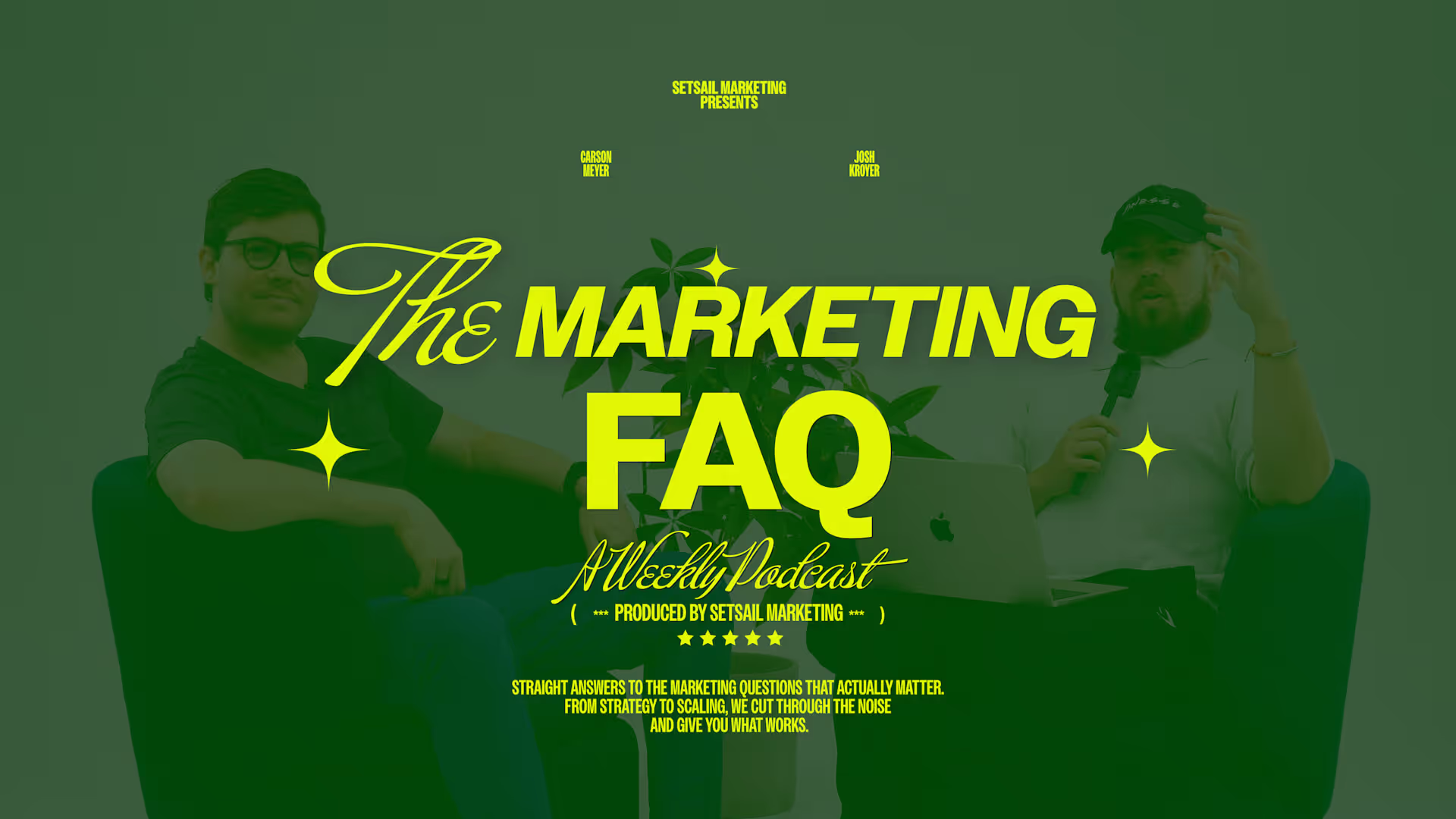
Ecommerce Trends That Actually Matter: How to Spot What’s Real Before Everyone Else
Ecommerce trends are everywhere — but which ones are worth chasing? In this post, I break down a proven system to separate signal from noise using real buyer behaviour, tools like Ahrefs and Google Trends, and examples of trends that actually drive revenue. Includes a Notion tracker to help you apply it.

Jason Atakhanov
10 min
August 31, 2025
How I Learned to Filter Hype From Real Trends
I used to fall for the noise.
A new platform would launch, and I'd be the first to sign up. A Twitter thread would go viral, and I’d catch myself thinking, “Maybe this is the next big thing.” But after years in marketing, you start noticing a pattern: the loudest ideas aren’t always the most profitable. What happened to NFTs? Weed Stocks? Never-ending IPOs from small companies?
The real shifts — the ones that actually move revenue — happen quieter than you’d think.
So I built myself a filter. Simple. Repeatable. Grounded in behaviour, not buzz. Here’s how I use it to separate signal from noise:

🔍 Step 1: Is It Getting Adoption or Just Attention?
There’s a huge difference between people talking about something... and people actually using it.
Take Threads. Exploded overnight. Everyone posted about it. But two months later? Crickets.
Now compare that to something like ecommerce trends. It doesn’t trend on Twitter (X) – but it shows a consistent climb in Google Trends, week after week. You can actually see search interest compounding.
I’ll plug it into Ahrefs too — if the keyword’s trending upward across six months, that’s a green light.
💰 Step 2: Is Anyone Making Money From It?
Talk is cheap.
If you can’t point to a single case study, a P&L change, or even a new offer built around it — it’s not a trend, it’s a distraction. (I don't want to hear "6-figures", I want to know the transaction details.)
Some of the B2B ecommerce trends we’ve tracked led to clients improving close rates with personalized checkouts and self-serve demos. That’s not theory — that’s profit.
So I ask: who’s already quietly cashing in?
🌍 Step 3: Does It Tap Into a Bigger Shift?
The best trends are reflections of something deeper.
Not a one-off app, but a behavioural shift already in motion.
Example:
- Content marketing trends aren’t just about blog posts — they tie into buyer self-education and distrust of sales teams.
- Online shopping trends follow the rise of mobile-first behaviour and same-day expectations.
If the trend solves a new pain or rides a cultural wave — it’s probably worth your time.
The Truth Most Marketers Miss
You don’t need to predict the future.
You just need to notice the present better than most people.
The signals are all around us — in search data, hiring patterns, buyer behaviour — you just need to stop chasing hype and start paying attention to what people are actually doing.
That’s where the wins are.

How I Spot Real Trends (and Filter Out the Noise)
I’ve been fooled by noise before.
I think we all have.
You see something blowing up on LinkedIn — maybe it’s “community-led growth” or “voice search” or whatever the latest buzzword is — and you think, “Damn, maybe I need to jump on this before I miss the wave.”
But what I’ve learned, the hard way, is that by the time something feels loud… it’s usually too late. The arbitrage is gone. The hype is peaking. And what comes next is usually silence.
Now, I’m not saying you shouldn’t pay attention to what’s trending — you should. But the mistake is assuming that hype equals opportunity.
So how do I spot real trends?
How do I separate the signal from the noise when the feed is flooded and everyone’s an expert?
I use a system. Not a fancy one — just something repeatable that helps me make smarter bets.
Let me walk you through it.
Step 1: Use Tools, Not Just Reddit or X
I like Reddit. I’ll scroll through it like anyone else. You’ll see posts go viral about the latest social media trends this week, and it’s easy to think you’re behind if you’re not part of the conversation.
But here’s the truth: it’s the worst place to evaluate if a trend is actually worth acting on.
It’s full of hot takes and echo chambers. One person says “Web3 is the future,” and within 48 hours, you’ve got 10,000 people agreeing — but none of them have actually implemented anything.
So instead of asking who’s talking, I look at what people are doing — especially around ecommerce trends, content marketing trends, and new patterns in how people buy.
Ahrefs is my first stop. I’ll take a keyword like “AI for small business” and look at its search volume trend over the last year. If it’s climbing month over month — not spiking, but steadily growing — that’s signal. That means more people are not only interested, they’re actually looking for answers, tools, or services.
Compare that to something like “metaverse app” — huge a year ago, totally flat now. That tells me the curiosity was there, but the adoption wasn’t.
Then I check Google Trends to cross-reference. Am I seeing a seasonal blip or a long-term shift in interest?
One of my favourite examples was online shopping trends. Boring name, right? But look at the graph. It’s a staircase going up — year after year. Especially post-COVID. That’s a macro behaviour shift, not a flash in the pan.
These are the kinds of trends in ecommerce that fly under the radar but create real opportunity if you’re paying attention.
For earlier signals, I use tools like Exploding Topics and Glimpse. These help me spot breakout terms before they hit mainstream media. If I see the same term showing up in both places, it’s worth watching.
And don’t sleep on Reddit or the Chrome Store. That’s where builders live. If I see people making niche tools, asking hard questions, or creating micro communities around a topic — I know it’s getting traction.
Step 2: Cross-Validate With Real Behaviour
This is where most people stop short. They find something trending and think that’s enough to act.
Not for me.
Once I’ve spotted a trend that looks promising in the data, I look at what’s actually happening on the ground.
Are businesses moving in that direction?
I’ll check LinkedIn job postings. Are companies hiring for that thing? If I see titles like “AI Content Strategist” or “Web3 Community Manager” popping up — that’s behaviour. That’s budget being allocated.
Then I dig into VC funding data through Crunchbase or even just good ol’ news releases. If investors are backing tools in the space, it means they see a future there. They’re betting on longevity.
I’ll also use Google Ads Keyword Planner — especially when evaluating b2b marketing trends that have a longer sales cycle. I’m not just looking at volume — I’m looking at cost per click. If people are paying $15–$30 per click for a keyword like “b2b ecommerce platform,” that’s not noise — that’s real commercial intent.
And here’s a trick most people don’t use:
Call your clients. Ask them what they’re hearing. What their team is prioritizing. What new tools they’re budgeting for this year. You’ll often find patterns before the market catches on.
Step 3: Look for Compounding Effects
Finally, I ask: does this trend actually solve a real problem?
Because here’s the thing — novelty fades. But real solutions compound.
Some trends feel exciting because they’re new. Others are exciting because they unlock better margins, save time, or open new revenue streams.
That’s the kind I want.
For example, the rise of personalized ecommerce checkouts — that’s not hype. That’s conversion rate optimization baked into a UX trend. It saves time, improves the user experience, and increases average order value. Triple win.
We’ve seen content marketing trends tied to AI-powered editing dramatically speed up production without bloating headcount. That’s not just noise — that’s leverage.
And when you layer in ecommerce trends 2024 and 2025, things like same-day delivery, zero-click checkout, or multi-channel attribution — you’re looking at structural shifts, not seasonal tactics.
The best trends don’t just sparkle — they stack.
They make your systems faster.
Your marketing cheaper.
Your business more profitable.
If I can trace the trend back to ROI, not just attention, it goes on my shortlist. At the end of the day, trendspotting isn’t about predicting the future — it’s about reading the present better than everyone else.
You don’t need to be a futurist.
You just need a sharper lens.
Use the tools. Watch the behaviour. Look for compounding effects.
Do that consistently, and you’ll stop chasing hype…
…and start building on the trends that actually move the needle.

Case Studies: When Trends Print, and When They Burn
Let me give you a few real-world examples — because it’s one thing to talk theory, and another to see how it actually plays out.
We had two pitches cross my desk a few years ago.
The first was an AI-powered CRM tool, aimed at helping service-based businesses respond faster to inbound leads by automating the first touchpoint. It tapped into real online shopping trends — customers expecting instant replies, personalized service, and fast turnarounds.
The second was an NFT loyalty program for DTC brands — think “digital stamp cards, but on the blockchain.”
Both sounded futuristic. Both had impressive decks. But only one still exists today.
The AI-powered CRM? It's now doing seven figures, white-labeled across multiple agencies, and used by real businesses to improve close rates and reduce staff hours. Real problem, real adoption, compounding results. It aligns with several key ecommerce trends we've been tracking for years — automation, personalization, and self-serve sales journeys.
The NFT loyalty program? Gone.
The brands who tried it saw zero uptick in repeat purchases, customer confusion, and worst of all — no one cared about owning a JPEG stamp tied to toothpaste. The hype was there. But the behaviour wasn’t.
Another example: short-form video.
When TikTok first came out, a lot of marketers dismissed it as just another Gen Z dance app. But the smart ones watched the behaviour. They saw the compounding views, the retention, the way the algorithm pulled people into rabbit holes.
That format — fast, vertical, lo-fi video — is now the default.
Instagram Reels. YouTube Shorts. Even LinkedIn is experimenting with it.
It wasn’t just a trend — it became a behavioural norm.
Compare that to something like audio-only social apps — remember Clubhouse?
For a minute, it felt like the next big thing. Elon joined. VCs flooded in.
But here’s what was missing: repeatable behaviour.
People didn’t make time for it long-term. It was novelty, not utility.
It’s one of those social media trends that spiked hard and then vanished.
That’s what separates a trend that prints… from one that burns.

My Simple System for Evaluating Trends
After getting burned (and blessed) by a few of these myself, I built a simple mental model. It’s not rocket science, but it works.
Every time I spot a new trend, I run it through this 3-step filter:
🔍 1. Curiosity: Explore Without Bias
First, I give myself permission to look — not dismiss.
This is key.
Too many people ignore trends because they don’t understand them, or they’ve been burned before. That’s how you miss waves — especially in fast-moving areas like content marketing trends or trends in ecommerce, where small changes compound fast.
So I approach with curiosity.
What’s actually going on here? Who’s this for? What pain is it solving?
Sometimes, I’ll just consume content for a week. Read product reviews. Join the subreddit. Click on ads from new players in the space. I want to understand what it feels like from the user side.
📊 2. Validation: Use Data to Confirm or Kill
Next, I check the numbers.
Is this trend showing up in Google Trends? (By the way, use the new Google Trends API – it's fantastic)
Are keywords like “AI for small business” or “b2b ecommerce platform” growing in Ahrefs?
Is it being backed by VC money? Are companies hiring roles tied to it?
For example, if I see demand rising for “Customer Journey Strategist” or “Head of Retention,” that supports b2b marketing trends we’ve been hearing about — longer funnels, fewer touchpoints, and better LTV.
This is where I confirm whether it’s a fad or something deeper.
If I see sustained search volume, strong CPCs, and companies actually integrating the trend — it moves forward.
If I see a big spike followed by silence? I kill it.
🚀 3. Test: Build Something Small to Learn Fast
This part matters.
I don’t just think about trends — I try to touch them.
I’ll build a quick landing page. Or run a $100 ad campaign. Or write a blog post optimized for something like ecommerce trends 2025 and see what hits.
Sometimes I’ll create a simple MVP for a client or test the angle in a sales call. You’d be surprised how much you can learn from just trying to apply it in real life.
The goal isn’t perfection — it’s feedback.
Does the audience care?
Do people convert?
Does it actually move the needle?
If yes — we build.
If no — we move on.
Bonus: I Track It All in One Place
Because I’ve been doing this long enough, I’ve built my own Notion Trend Tracker to keep track of what I’m watching, what I’ve tested, and what’s worth doubling down on.
You don’t need to remember everything — you just need a way to capture insights before they disappear into another scroll.
While the hype attention deficit affects mostly Ecommerce, we know it's a tempting ground for every other industry. We do all of this across multiple marketing assets – Website Design with CRO, PPC Marketing, Social Media Marketing, and SEO.
Your Turn: What’s Overhyped Right Now?
I’ve shared my system, my filters, and the trends I’ve seen rise and fall.
Now I want to hear from you:
👉 What’s a trend you think is totally overhyped right now?
👉 Or better yet — what under-the-radar signal are you paying attention to?
Let’s crowdsource what’s noise… and what might just be the next big thing.

Jason Atakhanov
August 31, 2025
Recent Posts:

Ecommerce Trends That Actually Matter: How to Spot What’s Real Before Everyone Else
Ecommerce trends are everywhere — but which ones are worth chasing? In this post, I break down a proven system to separate signal from noise using real buyer behaviour, tools like Ahrefs and Google Trends, and examples of trends that actually drive revenue. Includes a Notion tracker to help you apply it.

Podcast: How Do I Know If My Marketing Is Actually Working? (and How to Fix It)
Too many businesses invest heavily in digital marketing agencies, SEO services, PPC management services, and social media marketing companies—but don’t see the profit they expected. The problem? Most marketing agencies focus on vanity metrics instead of real business results. If your marketing agency can’t directly tie their work to increased leads, sales, or revenue, you’re working with the wrong partner.

Secrets to High-Quality Leads: A Podcast on Proven Digital Marketing Agency Strategies
Discover actionable strategies from Setsail Marketing, Vancouver’s top digital marketing agency. Learn how to generate high-quality leads with expert PPC, SEO, web development, and full-funnel marketing solutions.

